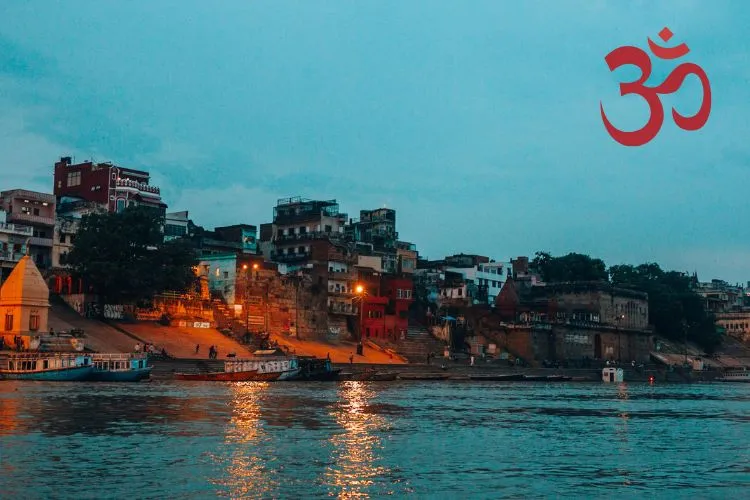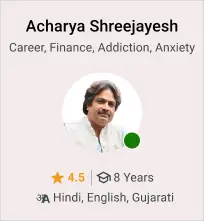Understanding Hinduism: History, Teachings, Beliefs, and More

It is considered one of the oldest, if not the oldest religion in the world. We are talking about Hinduism, the world’s third-largest religion after Christianity and Islam. Throughout this guide, we will sprinkle the mind-boggling facts about Hinduism, along with making you understand the minutest of the details about this fascinating religion. So buckle up.
The roots of Hinduism go back to at least 4000 years. In fact, the name Hindu comes from the civilization of ‘Indus’. But we are getting ahead of ourselves here. Let’s go one step at a time. Before we move on to the origin, we need to understand what Hinduism represents as religion.
What is Hinduism?
The word ‘Hinduism’ is a word that does not originate from somewhere but is given by the people. In fact, there is no one specific founder of the religion. This also makes it hard for scholars to find the origin of the religion.
As mentioned above, it comes from the word ‘Indus’, a river in North India and Pakistan. The civilization developed on the banks of this river was called ‘Indus valley civilization or ‘Sindus’ in Persian.
The faith of Hinduism lies in ‘Sanatan Dharma’, the eternal order or duty (we will discuss it in detail further). Ancient scriptures like Vedas are the pillars to understand the traditions and roots of Hinduism. Brahman is believed to be the first cause of Hinduism. He is the creator of everything.
However, there is no one God in Hinduism. There are many avatars of one God and based on the beliefs, they are worshipped differently by different people. Once again, there is no founder of Hinduism. It is a system of beliefs and faith that has developed over thousands of years.
Origin of Hinduism
It is believed that Hinduism started around 2300 BC and 1500 BC. It is a combination of beliefs and there is no one founder of the faith like other religions.
Vedas were composed between 1500 BC and 500 BC. This period is called the Vedic period and many of the traditions and rituals prevalent in Hinduism today date back to this period. The most important of them is the chanting of the Mantras.
The worship of Vishnu, Shiva, and Sakti started between 500 BC to 500 AD. This is the period when along with beliefs and chanting, deity worshipping entered the religion.
Concepts and other beliefs such as Dharma were introduced by some texts after that. Buddhism and Jainism also split out of Hinduism and spread separately.
Hinduism Fact 1: Astrology, Yoga, Pi, Meditation, Zero, Decimal System, and Even Shampoo have their origins in Hinduism!
History of Hinduism
Earliest Evidence
Rigveda is one of the earliest sources of history in Hinduism. It has texts that were written in the last two centuries of the 2nd Millennium before Christ. Though it does not talk about Hinduism that we know of today, it was a religious system that is identified today as Brahminism or Vedism.
People in that era, the Vedic people were close to Iranians as Sanskrit and some early Iranian languages bear many similarities. The language is also believed to enter Europe and become the Indo-European language that will later turn into many of our modern-day languages.
In short, Iranian and European connection, along with Indus valley in Pakistan, Hinduism was simultaneously developing during this period.
How did Hinduism contribute to the study of psychology? Chat with expert to know more.
Vedic Period (From 2nd millennium to 7th century BC)
Rigveda is not written by one person or a group of people, rather it is a work of centuries. It contains more than 1000 hymns praising deities, prayers, and even contains the mythology relevant to those deities. Rigveda is also the first indicator telling us about a developed religion during the Vedic Period.
| Hinduism Fact 2: Vedas are the oldest known scriptures of the world, originating around 1700-1100 BCE. |
A Time of Change (From 6th Century BC to 2nd Century BC)
From 550-450 BC, the Hindu religion went under a lot of changes. The authority of Vedas and Brahmans was challenged and Buddhism and Jainism were conceptualized. During this period, Prajapati was considered the highest God, and Indra was second to him. Brahmins were challenged on economic and moral grounds.
This was also the time people were believing in Yakshas (divine beings of fertility) and Nagas (spirits of cobra). Around 500 BC, the concepts of four ashramas become prominent. They are Brahmacharin (celibacy), Grihastha (marriage and household), Vanaprastha (forest dwellers), and Sanyasi (ascetic).
Around the 3rd century BC, the Mauryan Empire arose and their rulers were not Brahams. The famous emperor Ashoka was the third ruler of this empire and he was a follower of Buddha. In western India, Vasudeva was worshipped. He was identified with the old Vedic Vishnu. One of Vishnu’s incarnations, Krishna was later widely accepted in the same region.
The statues of Yakshas, images of Vasudeva and Shiva survived, and at the end of the Mauryan period, they appeared.
Hinduism Taking Shape (From 2nd Century BC to 4th Century AD)
Revised epics Ramayana, Mahabharata, and Bhagavadgita from Mahabharata marked the beginning of the Common Era of Hinduism. It set off the worshipping of Vishnu, Krishna, Rama. From his active role in Mahabharata, Shiva also came into the picture.
Rise of the Sects
At the end of the Rigveda period, Lord Rudra was gaining importance. In the Upanishad Svetasvatara, Rudra was called Shiva for the first time. It was during this time, the sects of Vaishnavism and Shaivism were promoted.
The texts of these times mentioned Hindu temples. However, it is believed that they must have been made of wood as there is no physical evidence of them.
During the time of the Gupta dynasty (320 AD), Vaishnavas were supported by rulers and Gupta emperors took the title of ‘param Bhagavata, which translates to ultimate devotees of Vishnu. There were many temples of Vishnu at that time and his incarnations were also worshipped. Krishna and Varaha were the most worshipped of them all.
Along with Shiva, his son Skanda or Kartikey was also mentioned around 100 BC. However, Ganesha, the elephant god and Shiva’s other son was mentioned late in the 5th century. It was around that time when Surya, the sun god was also mentioned and temples were built in his name.
Along with the sects of Vaishnavism and Shaivism, Shaktism also took place. Lakshmi, the consort of Vishnu was always worshipped since the beginning of the Common Era. This time, the cult of Durga also gained traction along with the concept of ‘Shakti’.
Hinduism also spread out of India and influenced many countries of Southeast Asia. Buddhism has become more widespread as well. In many places, Ramayana and Mahabharata became famous, and countries other than India also started following Hinduism & Buddhism.
Hinduism in 4th to 11th Century: The concept of ‘Bhakti’
The rise of the language also influenced the devotional movements. Hymns were created in the popular languages of the time, beginning with Tamil. There were two groups of poets: Shiva worshippers called Nayanars and Vishnu worshippers called Alvars.
The term ‘bhakti’ was mentioned in Bhagavad Gita and Shvetashvatara Upanishad. It was now for the common people. The singing of the devotional songs was emotional and mystical, forming a bond like a lover and beloved between the deity and worshippers.
Along with intense love for the divine, these songs also spread the idea of humility and brotherhood.
When there was a Muslim invasion in North India, Buddhism was absorbed by Hinduism. But before that, many beliefs of Buddhism taught great minds like Kabir.
Invasion of Muslim Rulers
The invasion of Muslims in the 12th century on the Ganges (Ganga) river basin meant the end for Hindu royals. Many Muslim emperors were strongly anti-Hindu, while others were well disposed towards the religion. Many Hindu temples were destroyed during the time. In places like Pakistan and Bangladesh, the conversion from Buddhism to Islam did become common.
Emperor Akbar tried to restore harmony in many ways during his rule, though his efforts were undone by rulers like Aurangzeb. During this period, many customs and linguistics elements were exchanged between Islam and Hinduism.
Hinduism moved more towards southern India now. The system of class and caste had seeped into the religion by now. The hierarchy of caste made the religion more complex and distributed the power to the specific group of people. On the brighter side, the sacrificial processes declined. In place of those, sacrifices of vegetables were made to the mother goddess.
By this time, Rama and Hanuman were worshipped majorly, along with Krishna. Radha was yet to be there, however, and the consort of Krishna would not be worshipped until the 12th century. Ardhanarishvara, the incarnation of Shiva and Shakti were popular deities, too. We will talk about the temples later in this piece.
Modern Era (From 19th Century)
In the 19th century, the Portuguese were the first to come to India from modern Europe. They promoted Roman Catholic missionaries and converted many in coastal towns. Most of those who were converted are from the lower castes. With British rule in India, the roots of Christianity spread across the nation. However, majorities of Hindus were unaffected by it. The English were also sometimes in favor or against the spread of Christianity in India depending on the times.
These were also the times of reforms in religion. Ram Mohan Roy was the pioneer of these reform movements. He founded Brahmo Samaj (Society of God) in 1828. Debendranath Tagore (Father of Ravindranath Tagore) later became the leader of Brahmo Samaj. He promoted literacy in the people and opposed the practice of ‘Sati’. He founded the famous ‘Shantiniketan’ in 1863 in Bengal.
Brahmo Samaj abolished the caste system under the leadership of Keshab Chunder Sen and admitted women as members of the society. With Keshav Chunder’s death in 1884, the Brahmo Samaj started to fade away. Arya Samaj was the next reform movement for Hinduism.
Dayanand Saraswati was the reformer who founded Arya Samaj in 1875. He was a Yogi who lost faith in Yoga. Dayanand Saraswati was against worship, sacrifices, and the concept of worshipping more than one god (Polytheism). Arya Samaj was the first to acknowledge western knowledge and established schools and colleges.
The Ramakrishna Mission was the next important reform. Ramkrishna was a devotee at a temple of ‘Kali’, who attracted some educated followers who spread his words. The most important of those messages were ‘all religions are true.’ One of his followers was Narendranath Datta, who would later go on to be known as Swami Vivekananda.
Vivekanda promoted social service and was strictly against the caste system. Another modern influencer of Hinduism was Shri Aurobindo. After starting in Politics, he withdrew and established an Ashram in Puducherry. After him, Rabindranath Tagore was at the center of many religious thoughts. Not only Indians, but he also influenced non-Indians and became a popular personality someone who let the West know about Hinduism.
Role of Hinduism in Independence of India
These reforms we just talked about, were closely related to the movement of independence of India. Arya Samaj promoted nationalism and thought Swami Vivekanda and Ramakrishna Mission were not political, they believed in self-government. People like Bal Gangadhar Tilak joined Indians with the help of religion and aroused the feeling of nationalism. He used the annual festival of Ganesh Chaturthi to promote that. He inspired many future leaders of India, including Mahatma Gandhi, father of the nation.
Swami Vivekananda spread the idea of devotion to the poor instead of religion for the betterment of India. Shri Aurobindo promoted ‘Vande Mataram’ to combine the freedom of India with a sense of devotion, making India the ‘motherland’. The concept of devotion was directed towards the independence of India.
After Independence
At the brink of independence, nationalism was at its peak and that led to tensions between Hindus and Muslims were on the rise and it resulted in the separation of India and Pakistan. Though India chose to be a secular nation, some nationalist parties were formed to establish a Hindu state. Many traditional prejudices and unfair rituals are not part of religion now, especially the caste system.
Holy Books, Scriptures, and Hindu Mythology
Hindu texts and scriptures can be divided into two categories. Shruti and Smriti.
Shruti is heard, and Smriti is remembered. Shruti is transferred to generation after generation by sages and there is no singular author. Smriti is almost always attributed to an author and they have elements of politics, ethics, society, culture, and more. Smriti is less authoritative than Shruti. Let’s talk about some of the most important Smriti and Shruti literature of Hinduism.
- Vedas
- Upnishads
- Smriti
- Puranas
Vedas
As mentioned before, Vedas originated in the Vedic Period in North India. It is in Sanskrit and includes hymns worshipping the Hindu deities. They are some of the oldest writings of Sanskrit literature. There is no author to these texts and they are believed to be composed over time. In Hinduism, they are the eternal source of the divine and not created by humans.
There are four vedas. Rigveda, Yajurveda, Samveda, and Atharvaveda.
- Rigveda:- Rigveda has ten Mandalas, each with a particular purpose. They are hymns in the praise of Hindu Gods. There are also stories about Hindu philosophy. They also discuss marriage and other rituals, morals, and ideal social behavior. Rigveda also describes the beauty of India and its seasons.
2. Yajurveda:- Yajurveda is divided into two parts further. Shukla Yajurveda describes religious rituals and ceremonies, whereas Krishna Yajurveda describes sacrificial rituals. Yajurveda describes the technicalities of offerings, and sacred rituals as well.
3. Sama Veda:- Sama Veda is described as the ‘book of song.’ It is believed that Sama Veda should not be read but you should sing it. The texts are the same as Rigveda, but they are in the form of melodies. It is also believed to be the representation of the mind and heaven.
4. Atharvaveda:- Atharvaveda consists of formulas that address the daily problems the Vedic people may have faced. It describes the cure with herbs, how to heal certain illnesses, how to love your partner and even world peace. Many consider it as the origin of medicine and yoga as it has mentioned breathing techniques.
Upanishads
Upanishads are also referred to as Vedanta, which translates to the ‘end of the Vedas’. This relates to the concept of Upnishads being the last chapters of Vedas. The important concepts of Hinduism like Brahaman (ultimate reality) and Atman (eternal soul) are central ideas of Upnishads. There are more than 200 Upanishads that are known.
Smiriti
Smiriti appeared after Vedas and Upnishads. They are Shastras and Itihasas like Mahabharata and Ramayana (Two of the most important scriptures of Hindu Mythology), Agamas, Darshana, and Harivamsa Purana. The Sutras are texts of specialized knowledge, like bhautikshastra would be physics and Vastushastra would be architectural science. Tantra literature is also found under Smriti.
| Hinduism Fact 3: Mahabharata is known as the longest poem ever written. It consists of 100,000 couplets or Shloka. |
Puranas
Purana means old or ancient. They mostly consist of legends and traditional stories. They are full of symbols and consist of the stories of Shiva, Sakti, Brahma, and Vishnu. It also tells the stories of Kings, sages, demigods, humor, astronomy, medicines, and more.
There are 18 major Puranas.
- Brahma Puran
- Padma Puran
- Vishnu Puran
- Shiva Puran
- Bhagavata Puran
- Narada Puran
- Markandeya Puran
- Agni Puran
- Bhavishya Puran
- Brahamavaivarta
- Linga Puran
- Varaha Puran
- Skanda Puran
- Vamana Puran
- Kurma Puran
- Matsya Puran
- Garuda Puran
- Brahmanda Puran.
Are You Wondering About the Pros and Cons of Your Zodiac? Read Here to learn more about Your Zodiac Signs.
Basic & Major Beliefs of Hinduism
Way of Living
More than a religion, Hinduism is a compilation of many beliefs. It is a way of life. In a more broad sense, it is a family of religions.
Brahaman
Hinduism is henotheistic, meaning they believe in worshipping one single deity despite believing in many Gods and Goddesses. It is like following different paths that will eventually lead to one destination. It is the creator and the creation itself called the ‘Brahaman’.
Dharma, Artha, Kama, and Moksha
Dharma refers to one’s duty in life, a path of righteousness. Artha is related to prosperity and economics. The Kama is one’s passion and desires. Moksha is the liberation from the material world to spiritual values.
Bhakti
Bhakti simply means devotion. It is a path of devotion. Worshipping of God can be done in a temple in the form of images and statues. Many find their devotion in the service of the suffering, too.
Samsara & Karma
Samsara is the constant cycle of life and death, and the incarnation after death. Karma is a law of the universe that can be interpreted as a sum of one’s good and bad actions and how they will affect their future.
Atman
Atman or eternal soul is part of everything that is living. It is a part of a supreme soul. The soul is not part of the cycle of life and death. The goal of the soul is to achieve ‘moksha’ or salvation. Moksha will end the cycle of birth & death, and that will make the soul one with the supreme soul.
Reincarnation
In Hinduism, death does not mean the end, the soul is not destructible. The soul will take on a physical body until it has achieved Moksha.
Maya
Maya refers to an illusion. It is a representation of Brahman in the real world. At individual levels, Maya is a representation of ignorance and ego. In its original form, Maya was used as an illusion created by the Gods as a magical power with humans.
Vegetarianism
All life is sacred and should be dealt with loved equally. Non-violence or ahimsa is to be practised. That also leads to vegetarianism, a diet not containing any kind of meat.
Gods & Place of Worship
As mentioned above, Hinduism believes in Brahman. However, there are many ways to reach Brahman, and therefore many Gods and Goddesses can be found. These are some of the major gods and goddesses in Hinduism.
Brahma: Brahma is often looked at as the creator. The world and all the living things are believed to be created by Brahma.
Vishnu: The nurturer, he is the one who protects and preserves everything that is created by Brahma. His avatars are some of the most worshipped deities in India, such as Krishna and Rama.
Shiva: If Brahma is the creator and Vishnu is the protector, Shiva is the destroyer. He destroys the universe to recreate it.
Shakti: The feminine form of energy, often considered the mother of everything. She is responsible for the creation, perseverance, and restoration of Dharma.
Krishna: The God of compassion and love, the hero of Mahabharata.
Ganesha: The elephant God and Shiva’s son, known to be the remover of the obstacles.
Skanda or Kartikeya or Murugan: Son of Shiva, the God of War.
Lakshmi: The Goddess of wealth and purity, consort of Vishnu.
Saraswati: The Goddess of learning and speech.
The devotion is called bhakti, and worship is known as ‘Puja”. Hindus worship in a temple or what is called a “Mandir”. They can visit the temples any time of the day to worship the Gods they believe in.
Puja can also be done at home, with shrines placed in the houses. They can be for a dedicated God or Goddess, or more than one of them.
There are many sacred sites for Hindus, most of them situated in India. Most notable of them are Amarnath Yatra to Amarnath cave temple in Jammu & Kashmir; Char Dham pilgrimage sites of Badrinath, Dwarka, Puri, Rameshwaram; and 12 jyotirlingas situated all across India.
| Hinduism Fact 4: The word Juggernaut comes from the Hindu deity Jagannath, an avatar of Vishnu. |
Read the 2025 Detailed Month-Wise Report to Learn More About the Various Aspects of Your Life in 2025.
Major Festivals in Hinduism
As several Gods are worshipped, and Hinduism is a group of many religions, there are many festivals to celebrate. However, these are the major ones you should know about.
Diwali: The festival of lights, which sends a message of light winning over the darkness. There are many stories behind the celebration of Diwali, the most prominent of them being the return of Lord Rama to his hometown Ayodhya after the exile of 14 years.
Holi: The festival of colors. It is celebrated for the triumph of Good over evil. The story behind Holi involves the burning of evil Holika, and it involves Vishnu’s Narsimha avatar which is part man and part lion.
Onam: Celebrated for the homecoming of Mahabali, and a story similar to Holi. Once again, a festival about the triumph of good over evil. It is also the official state festival of Kerala. Goat races and tug of war are the sights to behold during this festival.
| Hinduism Fact 5: Kumbh Mela, a once in a twelve-year gathering on the riverbank of Ganges can be seen from the space, with 30 Million people attending it on 10th February in 2013. |
Maha Shivratri: The celebration of the destroyer God – Shiva. Maha Shivratri literally translates to ‘the great night of Shiva’. People also keep fast on the day.
Krishna Janmashtami: Krishna Janmashtami is the celebration of the birth of Lord Krishna. Dahi Handi is a part of the celebrations, where teams make a human pyramid to try and break the yogurt pot hung high in the air.
Ganesh Chaturthi: Ganesh Chaturthi is the celebration of the birth of Ganesha. The devotees make clay idols of Ganesh and keep them in the communities or at home for a few days. After that, they are immersed in the water bodies.
Navratri & Dussehra: Navratri is about Goddess Durga and her victory over Mahisasura. The meaning of Navratri is nine nights where Goddess Durga is worshipped every night with a form of folk dance called Garba. Dussera is about Lord Rama’s triumph over Ravana, too. In the East, a similar festival goes by the name of “Durga Puja.”
Rama Navami: It is the celebration of the birth of Lord Rama, the hero of the epic Ramayana.
Ugadi: Ugadi is a new year of Hindus, celebrated in the Southern part of India. Mostly Karnataka, Andhra Pradesh, Tamil Nadu, and Telangana. Floral patterns, called ‘Rangoli’ are drawn on the floor and many snacks are prepared for the new year.
Hinduism in India and Across the World
There are approximately 1.2 billion Hindus across the world which makes up 15% of the world’s population. 79.8% of the population in India identify themselves as Hindu. Two major Hindu countries are India and Nepal. 81.3% of Nepal’s population identify themselves as Hindu.
Hinduism Fact 6: The largest Hindu temple is not located in India, but in Cambodia called Angkor Wat. It can also be seen on the country’s flag.
Hinduism is also followed by non-indic people of Indonesia, Vietnam, Ghana, Malaysia, and the Philippines. Other major countries of the world where you can find more than 5000 Hindus are Bangladesh, West Indies, Pakistan, Sri Lanka, Singapore, USA, UK, Thailand, Canada, South Africa, and Mauritius.
Ending Note
One of the major religions in the world, Hinduism is an interesting religion, to say the least. The teachings of Hinduism take us to the concepts of non-violence, Karma, and not to forget, vegetarianism. Moreover, Yoga also comes from the teachings of Hinduism. Many chants that we utter during Meditation come from Hindu scriptures, too. It surely is a gift to the world from India.
How Bhagavad Gita good for mental health? Talk to an online Expert right now.
Get Your First Call or Chat FREE with Our Expert Astrologers – Consult Now!
View AllFrequently Ask Question (FAQ’s)
Q1. What is Hinduism?
Ans. Hinduism is one of the oldest religions in the world, characterized by diverse beliefs, rituals, and philosophies. It emphasizes karma, dharma, and moksha.
Q2. Who are the main gods in Hinduism?
Ans. Hinduism has many deities, but the most significant ones include Brahma (Creator), Vishnu (Preserver), and Shiva (Destroyer), along with Goddess Durga, Lakshmi, and Saraswati.
Q3. Why do Hindus believe in reincarnation?
Ans. Reincarnation, or rebirth, is based on the principle of karma. The soul takes multiple births until it attains moksha by resolving past karmas.











